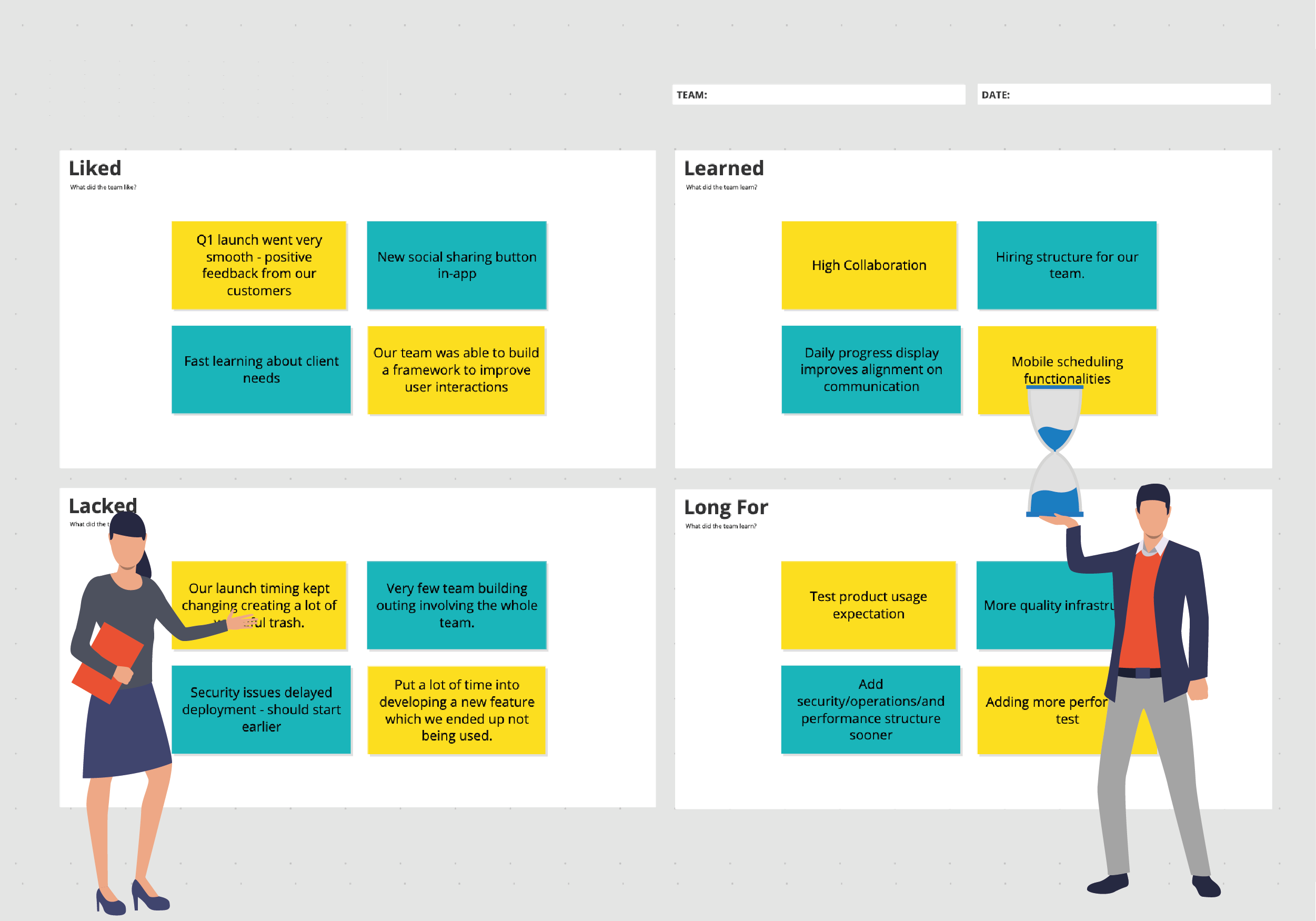

If you feel like your team keeps making the same mistakes over and over, they probably are. Now, what if that dream became your team’s reality? (Hopefully, everyone’s still wearing pants!) Have you ever had one of those bad dreams where you keep making the same mistake over and over again? Like showing up to the final exam without studying or standing up at a meeting only to discover you’re not wearing any pants?
#Sprint retrospective questions how to
14 min read How to Run An Effective Sprint Retrospective (Plus 7 Examples and Templates).This Moving Motivators activity was a very good opener for the team to build better relationships. At the end of team building, I told the team to respect each members’ motivators, and use that knowledge to make the most of how we communicate with each other to become a better team. One member, who was a bit depressed with relationships within the team, mentioned that her top motivators are acceptance and relatedness, and looked at renewing her confidence by insisting on what she values.

There were reaffirmations and surprises during the sharing, and it was very good that all the members spoke openly about themselves. I decided to spend time on team building instead and chose Moving Motivators.Įach member chose three motivators out of ten and located each of their satisfaction levels, taking turns to share their motivations. Although another item was chosen for the Kaizen action for the next sprint, the team agreed to deal with this issue in the mid-long term, and the item was put into our Impediment Board by the Scrum Master.Īnother Retrospective example: I was leading another scrum team as Scrum Master, when I realized the atmosphere of the team was not good enough to do a retrospective and execute Kaizen. This conversation changed the teams’ atmosphere, and they started to consider this issue a serious impediment for the team. We have to fix this situation.”īecause of language barriers, these two members had few one-to-one communications, but they both had the same perception of the issue. Another member from a global team, who usually keeps silent during retros, unmuted and said: “I totally agree with you. One local member pointed out that there is a huge gap of information and understanding from within the team and outside the team although we need to work very closely with everyone. Celebrate what you’ve learned and what experiments and adventures you’ll head toward next! Fill out the Celebration Grid together as a team during your Retrospective and then use it as a basis for discussion. The Celebration Grid is a diagram and a nice way to visualize what you learned during the last sprint. Retrospective Example: During my assignment as a Scrum Master in a large organization, I chose Celebration Grid at Sprint Retrospective for one multi-national scrum team. Using the Management 3.0 Celebration Grid during your Sprint Retrospective

Management 3.0 has many powerful tools for better, more efficient and fun retrospectives, so we recommend every Scrum Master learn about and utilize Management 3.0 practices to deliver meaningful retrospectives. Without retrospectives a team can hardly improve their processes, cannot gain velocity, they can feel stress and happiness will get worse. A retrospective is important because relentless improvement is the key essence of agile. It is held to reflect the process of our work and figure out Kaizen action for the next sprint. What is a retrospective?Ī retrospective is a scrum event for scrum teams, which is held at the very end of every sprint (btw: important to mention that it became very well known for Scrum, but is not limited to it). Why is that? We asked Management 3.0 Facilitators, Rie Fujimitsu, Transformation consultant and Scrum Master from Japan and Juan Mello, Agile Lead & Coach from Uruguay, to share their experiences and best practices. Management 3.0 tools and practices are great to be used in Sprint Retrospectives.


 0 kommentar(er)
0 kommentar(er)
